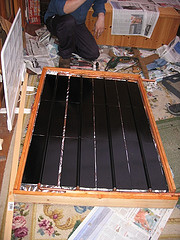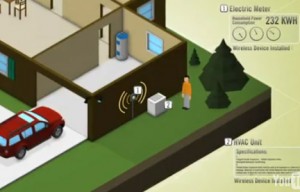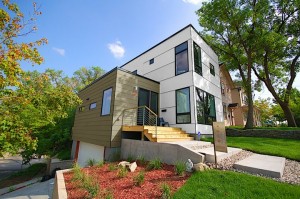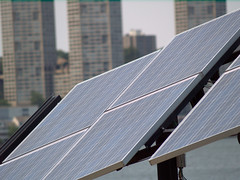Now that winter’s just around the corner, though you might be hard-pressed to believe it with how fickle Mother Nature’ been of late, you’re probably starting to dread the heating bills that accompany it. But just because it’s getting cold doesn’t mean you cannot take advantage of free energy from the sun.
For most of us, it’s probably too late to orient our homes so most windows are on the southern face, or plant deciduous trees on the same side of the house, and evergreens on the windward.1 But there are still plenty of ways to take advantage of this underused resourced, not the least of which is leaving your curtains open during the day, especially if you have modern, low-emissivity (“low-e”), insulated windows.
Another interesting way to use the sun is through solar thermal technologies. Although these systems typically garner less attention than photovoltaics, they can work quite well at our latitude, either as a space or water heater. Commercial systems such as these solar hot air panels are actually quite economical at approximately $1,500, but it’s also possible to build your own. There are a number of plans available online, of varying complexity, from soda cans & spray paint to sloping window-mounted affairs. With a one-square-yard device you could provide as much heat as an electric baseboard or portable heater.23
1. The deciduous trees shield the windows from intense solar exposure in the summer, but permit light to enter the home once the drop their leaves in fall. The conifers remain bushy year-round, acting as a windbreak and thereby reducing heat loss.
3. A simple but imperfect test to determine if a sheet of acrylic will let some of your captured sunshine escape is to see if a remote will work behind it. If the remote does not work, then the sheet blocks infrared, which is what you want.


 For the last six months, IBM has been running a Smart Grid test in the town of Fayettevile, North Carolina. First results show the
For the last six months, IBM has been running a Smart Grid test in the town of Fayettevile, North Carolina. First results show the  If any of our readers have the opportunity to build on a vacant lot, we recommend they visit this page at the
If any of our readers have the opportunity to build on a vacant lot, we recommend they visit this page at the 


 A little over a year ago
A little over a year ago 
